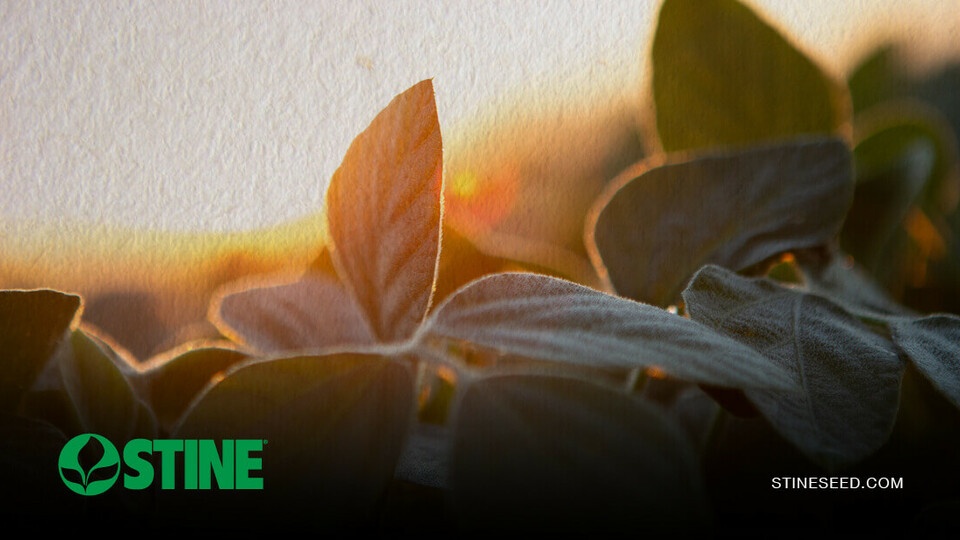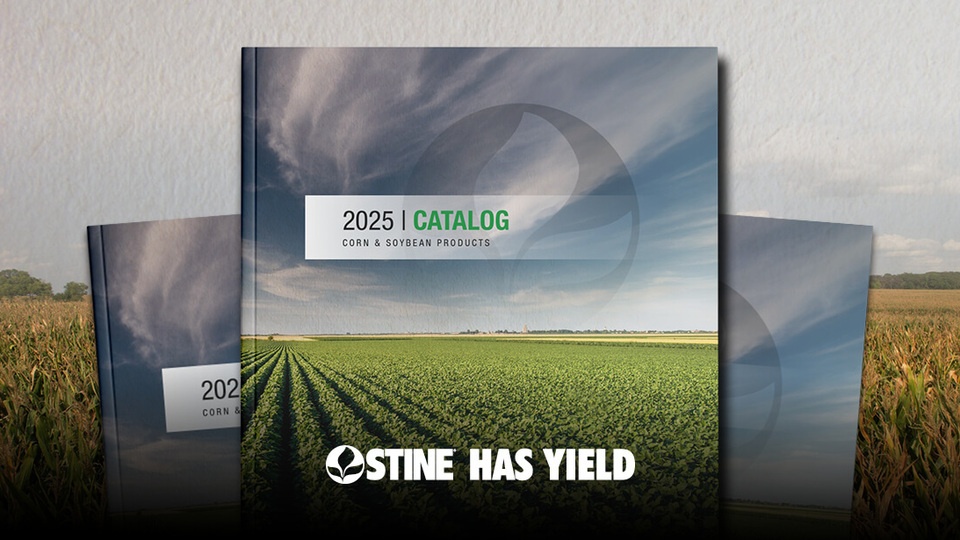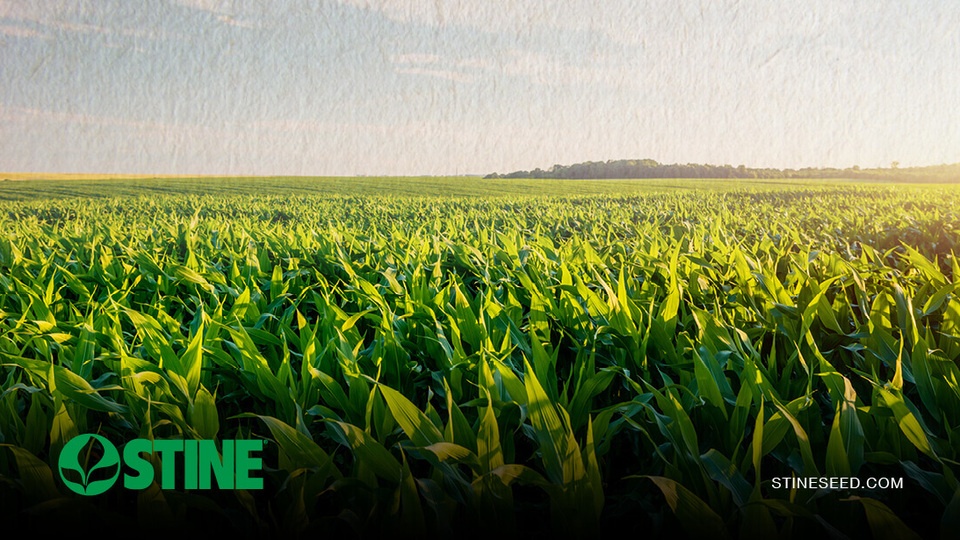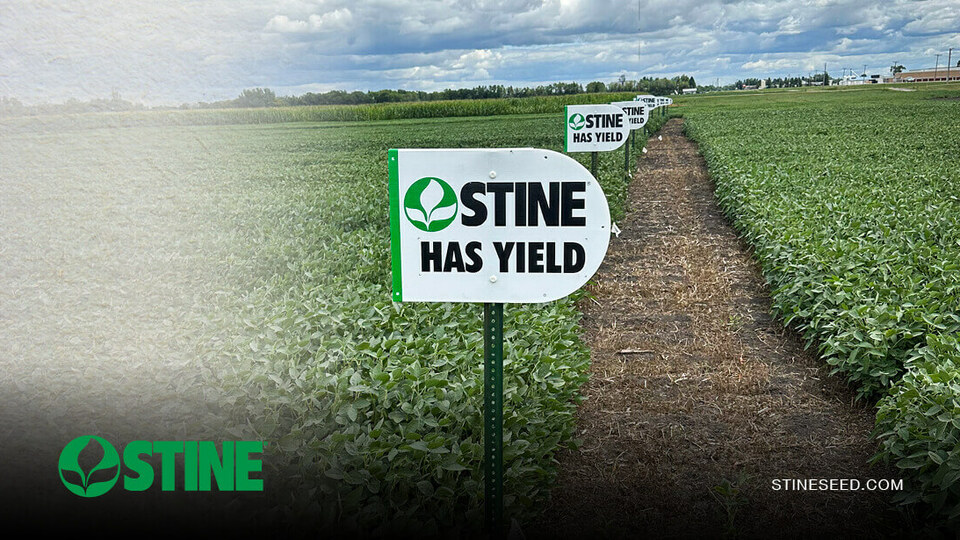Short stalk corn varieties
Stine® Seed Company is a leader in agricultural innovation and consistently pushes the boundaries of crop development, particularly with pioneering efforts in short-stalk corn varieties. As the agricultural landscape evolves, Stine remains at the forefront, providing farmers with cutting-edge solutions designed to meet the demands of modern farming. Our high-population lineup of short-stature corn is a testament to our commitment to providing farmers with robust, efficient and high-performing crops. This article will explore the intricacies of short-stature corn, the benefits it offers and how Stine continues to lead the charge in this revolutionary field.
What is short corn?
Short corn, also known as Stine short corn, represents a significant advancement in crop breeding. Traditional corn varieties, which can reach heights up to 12 feet, are often susceptible to lodging. Lodging occurs when plants are blown over by strong winds or heavy rain, leading to significant yield loss and increased harvesting difficulties. In contrast, short corn varieties, with their reduced height, are more stable and less prone to lodging, ensuring a more reliable and consistent yield.
The benefits of Stine short corn extend beyond lodging resistance. The shorter stature allows for higher planting densities, meaning more plants can be grown per acre. This increased density results in better resource utilization, such as water and nutrients, ultimately leading to higher yields. The reduced height also allows for better light penetration and air circulation, which can enhance the overall health and productivity of the crop. Additionally, shorter plants facilitate easier harvesting and management, reducing labor and equipment costs for farmers.
Stine's short corn varieties are meticulously bred to combine these benefits, offering farmers a reliable and efficient solution to modern agricultural challenges. By focusing on both the genetic traits and practical applications of short corn, we ensure our products meet the highest standards of performance and reliability.

Are there short varieties of corn?
Yes, there are several short corn varieties available today, each developed to address specific agricultural needs. These include a range of hybrids that may include distinctive features like short corn stalks with red tops and short corn stalks with brown tops. These visual markers not only help identify different hybrids in the field but also indicate various genetic traits that can be advantageous under certain growing conditions. Let’s take a quick look at both:
Short Corn Stalks With Red Tops
Short corn stalks with red tops are a visually distinctive type of corn that has a reddish hue at the top of the stalk or in the tassels. The coloring can be a result of genetic traits and/or environmental conditions.
Genetic traits:
- Anthocyanin production. The red coloration in corn tops is often due to the presence of anthocyanins, which are pigments that can appear red, purple or blue depending on pH level. These pigments are genetically controlled and can be expressed more prominently in certain corn hybrids.
- Marker for hybrid identification. In some breeding programs, red tops are used as a genetic marker to identify specific hybrids. This visual trait makes it easier for farmers and researchers to distinguish between different varieties in the field.
Environmental factors:
- Stress response. Environmental stressors, such as drought, nutrient deficiency or temperature fluctuations, can sometimes induce anthocyanin production, leading to red pigmentation. This response can be a protective mechanism to reduce stress impact.
- Sunlight exposure. Higher levels of sunlight can enhance the expression of red pigments in the plant, particularly in the tassels and upper parts of the stalk.
Short Corn Stalks With Brown Tops
Brown tops in short corn stalks typically indicate a different set of conditions or genetic traits compared to red tops. The brown coloration can be associated with the plant's maturity, disease resistance or specific hybrid characteristics.
Genetic traits:
- Disease resistance. Some corn hybrids with brown tops are bred to have enhanced resistance to certain diseases, such as northern corn leaf blight or gray leaf spot. The brown coloration can be a marker for these resistant traits.
- Natural senescence. As corn plants mature, the tops can turn brown naturally as part of the senescence process. This means the plant is almost fully grown and ready for harvest.
Environmental factors:
- Maturity and harvest timing. Brown tops can signal that the corn is mature and approaching the optimal harvest time. This is particularly useful for farmers to time their harvests accurately and ensure the best yield and quality.
- Water and nutrient management. Adequate water and nutrient management throughout the growing season can influence the coloration and overall health of the corn tops. Proper management can prevent premature browning and maintain the plant's vigor.
The visual markers of red and brown tops in short corn stalks provide several benefits:
- Easier identification. The distinctive coloration makes it easier for farmers and agronomists to identify specific hybrids quickly in the field, aiding in effective crop management.
- Disease monitoring. Brown tops can help in monitoring disease resistance and the overall health of the crop, allowing for timely interventions if necessary.
- Harvest timing. The color changes in the tops can serve as indicators for the right time to harvest, ensuring the corn is harvested at peak maturity for maximum yield and quality.
- Genetic diversity. The presence of these traits highlights the genetic diversity within short corn varieties, allowing breeders to develop hybrids that are well suited to different environments and growing conditions.
Stine's short corn varieties are a product of extensive research and breeding programs. The company's commitment to innovation ensures these varieties are not only resilient and high-yielding but also adaptable to diverse environmental conditions. By offering a wide array of short-stature corn hybrids, Stine empowers farmers to choose the best options for their specific soil types, climates and farming practices, maximizing productivity and profitability.
Moreover, the development of these varieties involves rigorous testing and refinement. Stine's researchers work tirelessly to identify the genetic traits that contribute to reduced height and enhanced performance. This dedication to excellence has made Stine a trusted name in the agricultural community, synonymous with quality and innovation.
What is the ornamental grass that looks like corn stalks?
An interesting aspect of plant breeding is the development of ornamental grasses that resemble corn stalks. These plants, often referred to as tall plants that look like corn, are popular in landscaping and decorative gardening. While they do not produce edible ears, their tall, sturdy structure and corn-like appearance make them an attractive addition to create visual interest and texture in garden and landscape designs.
The existence of these ornamental grasses highlights the versatility and aesthetic appeal of corn-like plants. They serve as a reminder of the importance of plant height and structure, not only in agriculture but also in horticulture. While Stine focuses on the practical benefits of short corn varieties for farming, the popularity of these ornamental grasses underscores the broader significance of plant breeding and genetic innovation.
What causes corn not to grow tall?
The height of corn plants can be influenced by several factors, including genetic traits, environmental conditions and planting practices. One of the primary reasons for shorter corn plants is the intentional selection of genetic traits that promote reduced height. These traits are identified through extensive research and breeding programs aimed at developing hybrids that offer the benefits of shorter-stature corn.
Environmental conditions, such as soil quality, water availability and temperature, also play a crucial role in determining corn height. For instance, stress factors, like drought or nutrient deficiencies, can lead to stunted growth. Conversely, ideal growing conditions can enhance plant height and overall health.
Planting practices, particularly spacing, are vital in achieving the desired plant height. Short-stature corn hybrids spacing is often optimized to ensure that plants do not compete excessively for light, nutrients and water. Proper spacing is vital to the health of short-stature corn hybrids.
This keyword phrase sounds strange but please DO NOT change it - it was a critical priority in the DJ strategy for this article and it’s the only place I can figure out where to put it!
The recommended spacing for short corn typically involves planting the seeds closer together than traditional, taller varieties. This closer spacing allows for a higher population density, which can lead to several advantages:
- Optimal light utilization. Closer spacing ensures light penetrates evenly throughout the crop canopy, reducing shading and promoting photosynthesis in all parts of the plant. This even light distribution supports healthy growth and increases overall productivity.
- Efficient nutrient use. Higher population densities mean that plants are grown more closely together, allowing them to use soil nutrients more efficiently.
- Improved water management. With closer spacing, the root systems of the plants can more effectively access and use available water. This can be particularly beneficial in areas with limited water resources, as it helps to conserve water and reduce waste.
High-population planting, made possible by the reduced height of short-stature corn, offers numerous benefits that contribute to increased yield and efficiency:
- Increased yield per acre. By planting more seeds per acre, farmers can increase the overall yield of their crops. Short-stature corn hybrids are designed to thrive under high-population conditions, ensuring each plant contributes to the total productivity.
- Better weed control. Higher population densities can suppress weed growth by reducing the space available for weeds to establish and grow. The dense canopy created by closely spaced plants can shade the soil, inhibiting weed germination and growth.
- Enhanced disease resistance. Closely spaced plants can create a microenvironment that reduces the incidence of certain diseases. For instance, the improved air circulation within the crop canopy can reduce the humidity levels that promote fungal growth, which lowers the risk of disease outbreaks.
- Resource efficiency. High-population planting maximizes the use of available resources, including light, water and nutrients. This efficient resource utilization leads to more sustainable farming practices and can reduce overall input costs for farmers.
- Easier harvesting. The uniform height and dense planting of short-stature corn can simplify the harvesting process. Modern harvesting equipment can more easily navigate fields with consistent plant height and spacing, reducing the labor and time required for harvesting.
In summary, the height of corn plants is influenced by a combination of genetic traits, environmental conditions and planting practices. Proper spacing and high-population planting are crucial for maximizing the benefits of short-stature corn hybrids. Stine's dedication to research and development ensures our short corn varieties perform well under a wide range of scenarios, providing farmers with the tools they need to achieve higher yields and more efficient crop management.

What is short-stalk corn?
Short-stalk corn is characterized by its reduced height, which offers numerous advantages to farmers. Short corn stalks are less prone to lodging, making them more resilient in adverse weather conditions. This stability is crucial for maintaining high yields and minimizing crop losses.
These shorter plants also allow for higher planting densities, which can lead to increased overall yield per acre. By optimizing the use of available space, farmers can achieve better resource efficiency and higher productivity. Additionally, short-stalk corn facilitates easier harvesting and management, reducing labor and equipment costs.
Stine's short-stalk corn varieties are designed with these benefits in mind. The company's dedication to research and development ensures these hybrids combine the best genetic traits with practical advantages, offering farmers a reliable and efficient solution for modern agriculture. By focusing on both performance and adaptability, Stine continues to set the standard for short corn breeding.
How long is the average corn stalk?
The length of an average corn stalk can vary significantly depending on the variety and growing conditions. Traditional corn stalks typically reach heights of 8 to 12 feet, but Stine’s short corn size is notably shorter, often between 5 to 7 feet. This reduced height offers several advantages, including improved resistance to lodging and better light distribution within the crop canopy.
Shorter corn stalks are also easier to manage and harvest, reducing labor and equipment costs for farmers. Additionally, the shorter height allows for higher planting densities, leading to increased overall yield per acre. Stine's commitment to developing short-stature corn ensures these benefits are readily accessible to farmers, supporting more efficient and productive agricultural practices.
By selecting shorter varieties, farmers can optimize their field management practices and achieve higher yields. Stine's dedication to advancing agricultural practices ensures our short corn varieties meet the highest standards of performance and reliability, making them a valuable asset for modern farming.
How tall should corn stalks be?
The optimal height for corn stalks depends on various factors, including the specific variety and the intended use of the crop. Understanding corn growth stages is essential for determining the appropriate height for different purposes. For instance, shorter stalks are sometimes preferred for silage production, where more plants per acre equate to higher tonnage and milk per ton rates.
In grain production, the focus may be on maximizing ear development and yield. Stine's short corn varieties are designed to balance these considerations, providing ideal heights for various agricultural needs. By tailoring the growth characteristics to specific applications, Stine helps farmers achieve the best possible outcomes.
RECAP: What is Stine corn?
Stine is well known for its innovative approach to agricultural breeding and development. As a pioneer in the research and production of short-stature corn, Stine offers some of the best short corn varieties available. These varieties provide numerous benefits, including enhanced resilience, higher planting densities and more yield potential.
Stine's dedication to advancing agricultural practices ensures farmers have access to cutting-edge solutions that meet the latest demands in the seed industry. With a focus on quality and performance, Stine's short corn varieties represent a significant advancement in the quest for more efficient and sustainable agriculture.
By continually pushing the boundaries of what is possible in crop breeding, Stine remains at the forefront of agricultural innovation. Our short corn varieties prove we’re committed to excellence, offering farmers a reliable solution for achieving higher yields and better efficiency in crop production.
Learn more about Stine short corn and other hybrids at StineSeed.com/corn/.
Learn more about Stine® Short-Stature Corn
Related Articles
-

Exclusive soybean offerings, only from Stine®
September 2024 in Agronomy
-

2025 Stine® Seed Catalog: Products by farmers, for farmers
September 2024 in Agronomy
-

Top corn offerings for 2025
August 2024 in Agronomy
-

Crop progress update
August 2024 in Agronomy
